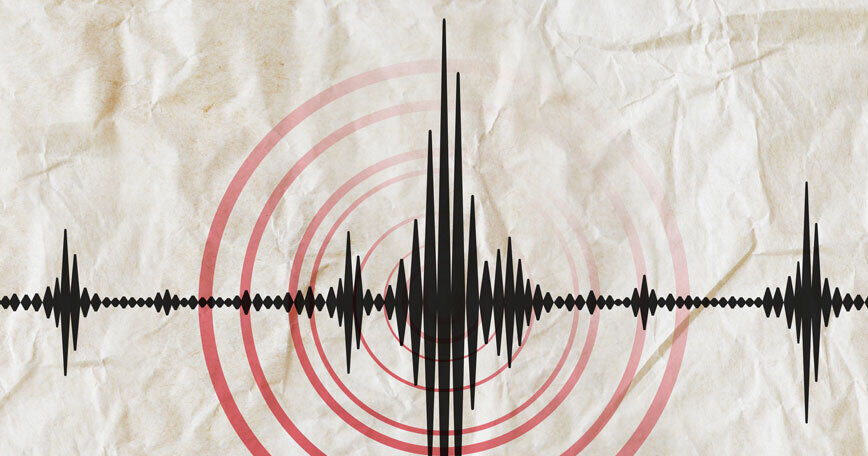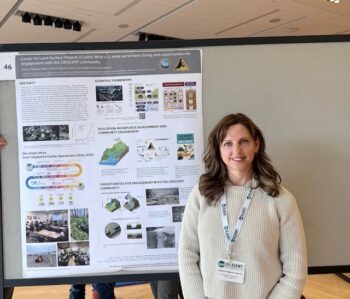Yes, People Are Planning for “The Big One”—Here’s How

Here in Clark County, we often hear about The Big One—the massive earthquake that scientists say could someday strike the Pacific Northwest. It’s a phrase that can spark both anxiety and curiosity. The question many people quietly ask is simple: Is anyone actually planning for it?
The short answer is yes.
Across the region, scientists and emergency managers are working together to better understand what could happen during a major Cascadia Subduction Zone earthquake—and how we can prepare for it now.
Recently, CRESA Emergency Management Coordinator Justine Magnoni-Garver, who focuses on mitigation and recovery planning, attended the Cascadia Region Earthquake Science Center (CRESCENT) Annual Meeting at the University of Washington. The meeting, held in late October 2025, brought together experts from across the Pacific Northwest to share new research on the offshore fault system capable of producing a magnitude 9 earthquake and tsunami.

Turning Science into Safety
The meeting focused on turning cutting-edge science into real-world safety. Researchers presented new findings in several key areas—each one helping bridge the gap between data and daily life.
One major focus was earthquake modeling—computer simulations that show how the Cascadia fault could rupture and how shaking might vary from the coast to inland areas like Clark County. These models are being used to update hazard maps and improve building standards, helping engineers design structures that can better withstand intense shaking.
Another area of focus was tsunami research, especially for coastal communities. Scientists are creating next-generation maps that show how far inland tsunami waves could reach. These models help planners improve evacuation routes and coastal safety infrastructure.
Researchers also shared updates in paleoseismology, the study of prehistoric earthquakes using geological clues such as sediment layers and buried forests. These studies confirm that the Cascadia Subduction Zone has produced powerful earthquakes every 300 to 600 years. Understanding that pattern doesn’t predict the next event—but it reinforces why long-term preparedness matters.
The meeting also highlighted cascading hazards—secondary effects that earthquakes can trigger, such as landslides, flooding, or liquefaction (when wet soil temporarily behaves like a liquid during shaking). Modeling these effects helps communities plan for multiple hazards at once rather than treating them separately.
Finally, new community data tools are being developed to share this science widely. Two examples—the Community Fault Model and the Community Velocity Model—combine mapping and seismic data to identify where shaking might be strongest. Local governments can use these tools to guide decisions about where to reinforce bridges, protect utilities, or stabilize slopes.
Through all of it, one theme stood out: partnership. Programs like the Cascadia Culture & GeoScience Exchange are helping scientists, tribes, and schools connect with local emergency managers, ensuring that everyone shares the same understanding of local hazards and solutions.
What This Means for Clark County
For Clark County, this science is already being put to work. The information shared at the CRESCENT meeting directly supports our ongoing hazard mitigation planning—the behind-the-scenes process that helps communities reduce long-term risk before disasters happen.
CRESA can use ground motion and landslide data to strengthen Clark County’s Natural Hazard Mitigation Plan, [AH1] which identifies where our region is most vulnerable and what projects can make the biggest difference. Having credible, science-based data also strengthens our applications for FEMA mitigation grants that fund projects like infrastructure retrofits, slope stabilization, and resilience improvements for critical facilities.
Beyond planning and infrastructure, this research also shapes how we communicate with the public. When people understand the “why” behind preparedness—why we talk about having some food, water, and medicine storage, why we practice neighborhood drills, why CERT training matters—it helps connect personal actions to a much bigger picture of community resilience.
Partnerships with organizations like CRESCENT, the Washington Geological Survey, and nearby counties also mean that Clark County isn’t working in isolation. By sharing data and pilot projects, we’re helping ensure that science supports real decisions—from land-use planning to emergency response priorities.
As Justine Magnoni-Garver put it, “Clark County is part of the larger Cascadia picture. Every new model or dataset helps us understand how shaking could affect our neighborhoods and what we can do now to reduce that risk. Preparedness isn’t about fear—it’s about foresight.”
Our Region Working Together
There are many people who are thinking about and preparing for The Big One. Across the Pacific Northwest, research centers, state agencies, and local emergency managers are connecting the dots between science and safety. Each new discovery feeds into plans that protect lives, strengthen infrastructure, and build community resilience.
While scientists often discuss a magnitude 9 Cascadia earthquake, smaller but still significant events—such as magnitude 7 earthquakes—are more likely and can serve as practical planning scenarios. Our preparedness efforts are designed to be scalable, so the same actions that build resilience for moderate quakes also strengthen us for the largest possible events.
We’re not waiting for a disaster to learn these lessons. We’re using the latest science to prepare now—so that when the time comes, our residents, responders, and communities are ready to recover quickly and effectively.
What You Can Do
Here’s a quick guide to building resilience at home:
- Join a CERT Class. CRESA’s Community Emergency Response Team (CERT) program trains residents in basic disaster skills like first aid, fire safety, and light search and rescue. Learn more and sign up at CRESA’s CERT webpage.
- Make a Family Plan. Discuss how to reach one another and where to meet if phone networks are down.
- Stock Up. Aim for two weeks of food, water, and essential medications.
- Connect Locally. Strong neighborhoods recover faster—know who around you might need help and who has useful skills.
- Stay Informed. Follow CRESA on social media and sign up for local alerts to receive updates during emergencies.
Moving Forward
Preparing for a large earthquake can feel daunting since we don’t know when it will happen or how bad it will be. But each step we take—individually and together—makes a real difference in our individual, family, and community preparation.
The work happening across the Cascadia region isn’t about predicting disasters. It’s about understanding them, learning from the past, and planning for a safer future.
Through collaboration, science, and community action, Clark County is helping lead the way toward a more resilient region—one that can face The Big One not with fear, but with preparation.